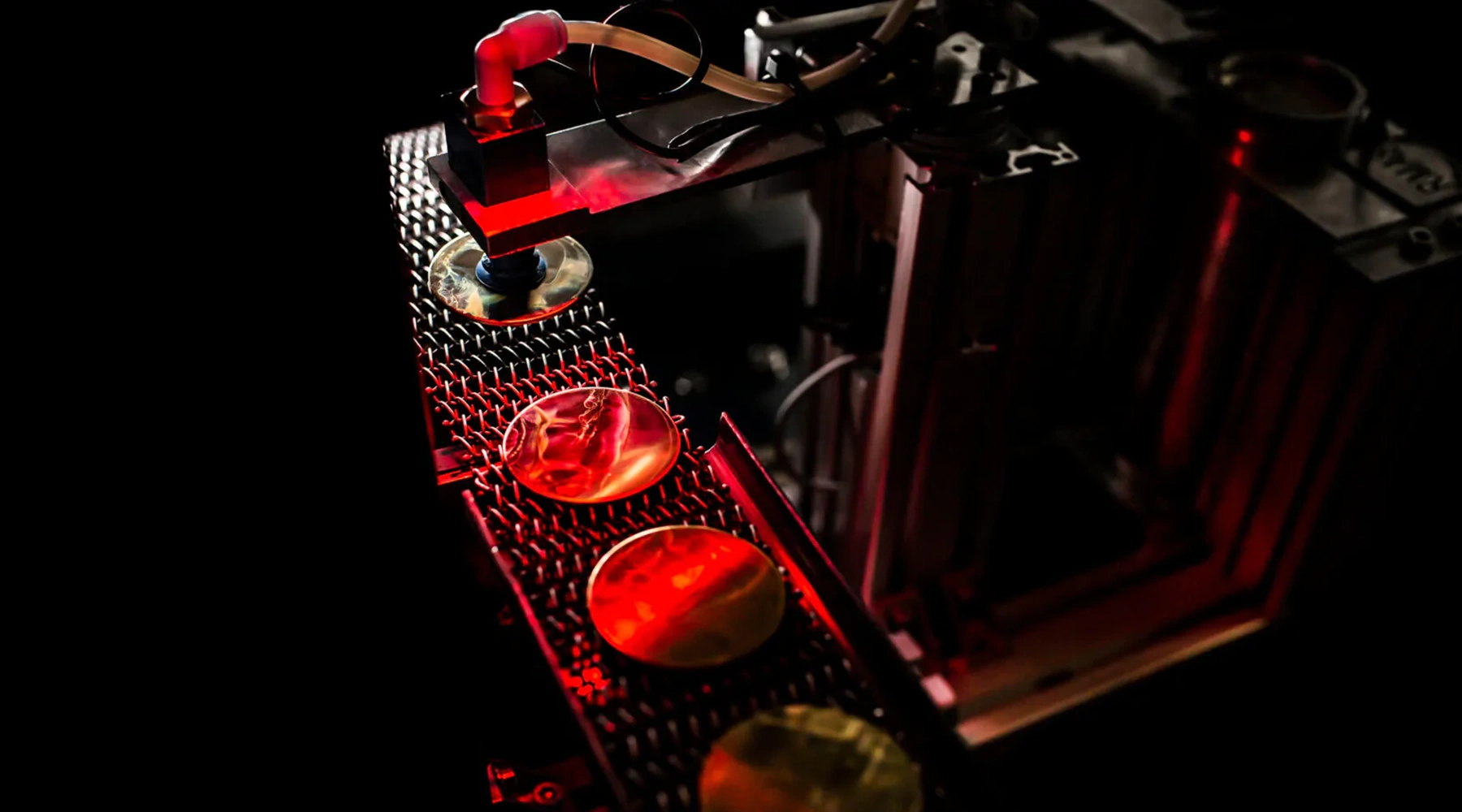- Watch Knowledge
Dial It Up: Discover the Craft of Dial-Making Through These Five Watchmakers
27 May 2025

Watch dials have come a very long way since the 19th century when the first wristwatch was created. Most dials were silver, with a brushed finish; the finest watchmakers applied handcrafts used in jewellery and decorative objects to watch dials. There has been a resurgence in artistic dials, from simple techniques such as lacquering to fine art creations involving a multitude of handcrafts.
Most dials begin in the same way, as a thin strip of metal that’s stamped into a shape. The majority of dials are round and made from brass. Other dial materials include precious metals, high-tech modern materials, or even the occasional silver dial. Depending on the design or peculiarity of a dial shape, multiple rounds of stamping may be needed. Heat is also applied in order to harden the metal. To protect the material, dials are electroplated to maintain an even colouring.

TAG Heuer’s latest Carrera Chronograph novelties show two different brushed finishes. The pink dial of the 39mm, gem-set Carrera Chronograph features circular brushing, while the ‘Panda’ layout dial on the right has a sunray brushed finish. (Credit: TAG Heuer)
A Good Brush
Once that is completed and the feet that is used to fix the dial to a watch movement are cut, holes are then machined for counters, hands, and windows for displays. Buffing and polishing bring out an even metallic shine. The most frequently applied technique in dial finishing is brushing or dacron. One example is the sunray or sunburst finish. With lines that emanate out from the dial centre, this is usually done with a brush moving across the dial from centre to edge repeatedly. Circular brushing or graining uses a stationary brush to engrave the surface of a rotating dial. Fine emery paper is used with satin brushing to produce concentric circles that reflect light uniformly.

Parmigiani Fleurier’s latest Toric Quantième Perpétuel limited-edition available in platinum or rose gold, features a grained texture resembling sandpaper or fine powder. (Credit: Parmigiani Fleurier)
Today, watchmakers use several other methods to create textured surfaces. Beadblasting or sandblasting uses glass or fine sand to create a grainy, finely textured surface that appears matt. Other techniques include the ‘Tuscan’ dial, which uses hand-hammering to create a frosted, asphalt-like effect. There’s also the stamped or embossed dial, where a pattern is imprinted on the dial to create a repetitive design.

The TAG Heuer Aquaracer Professional 300 Date has a dial which is first sunray-brushed, and embossed, before going through electroplating to deliver a graduated colouring. (Credit: TAG Heuer)
Once the design is completed, it’s coloured once more using electroplating. Layers of varnish or clear lacquer are applied to give it a glossy shine, then polished to enhance its beauty. Information such as hour indexes, minute tracks, and other details is usually printed onto the dial, or affixed on it. For most standard dials, that’s where things end.
Slightly More Traditional
One technique that is often discussed is guillochage or engine lathing. The craft involves using a lathe that draws a repeated pattern to engrave the design on a dial. Guilloché dials tend to have complex designs, and the depth further enhances light play. Technically, a dial can also be embossed with a similar pattern. There is a subtle difference, simply because the rose engine that’s typically used is guided by hand, and therefore has slight variations in pressure. It’s imperfectly perfect. One example is Parmigiani Fleurier’s barleycorn pattern dial, which is hand-engraved with a lathing machine.

Parmigiani Fleurier’s Tonda PF GMT Rattrapante Steel Platinum Verzasca features its Grain d’Orge pattern, made via guilloché à main. (Credit: Parmigiani Fleurier)
Guilloché work is often showcased with vitreous enamel or lacquer to enhance the beauty of the pattern while also protecting the surface. Lacquer is most often applied with an airbrush, which also creates a gradient ‘vignette’ effect that is an industry favourite. Enamelling involves applying layers of vitreous enamel over the dial, then firing it in a kiln to create a protective glaze. There are numerous techniques in enamelling that are used with guilloché work, most commonly the grand feu (great fire, using a high kiln temperature above 800°C), or plique-à-jour (clear or translucent enamel).

The Parmigiani Fleurier L’Armoriale Répétition Mystérieuse has a secret gold dial with a Fibonacci spiral pinecone guilloché pattern that is coated with enamel in the grand feu style. (Credit: Parmigiani Fleurier)
The incredible Objets d’Art of Parmigiani Fleurier, presented each December during the birthday of Michel Parmigiani himself, has one model that depicts this combination magnificently. The L’Armoriale Répétition Mystérieuse has a gold disc in place of a standard dial, with a pinecone motif developed by Yann Von Kaenel using the guilloche technique. It is then coated with eight layers of enamel and fired at above 800°C to achieve these stunning pastel colours that will last forever.

Enamelling on a hammered dial creates a new dimension of beauty. (Credit: H. Moser & Cie.)
Enamelling is one of the best-known artistic techniques in watchmaking. A rarity in the past, its interest has led to a growth in artisans and new techniques in development. One example is the Grand Feu enamel dial by H. Moser & Cie., which is applied on a hammered dial surface. Typically vaunted for its smooth glossy look, the uneven surface creates this textural depth and also collects vitreous enamel unevenly. This is a challenge during firing, but leads to unique dials as colour depth varies according to each surface.

The H. Moser & Cie. Endeavour Tourbillon Concept Turquoise Enamel is the latest expression of this technique, and is also presented in a magenta version. (Credit: H. Moser & Cie.)
The H. Moser & Cie. Endeavour Tourbillon Concept Turquoise Enamel is the latest variation of this technique, with a fumé effect that’s done by mixing a darker shade of enamel and blending it with the brighter teal colour towards the centre of the dial. The shading is highly uneven and created with a very gentle graduation. This is due to the uneven surface and the need to repeatedly fire the dials to reach the desired colour. If the enamel is too uneven, the dial can crack. A counter-enamel is applied to the back of the dial in order to ensure it does not warp.

The BOVET Miss Audrey and Monsieur BOVET timepieces with green guilloché dial. (Credit: BOVET)
Along with enamelling, another craft that’s often used to create glossy, even colours on a dial is lacquering. This is also often combined with guilloché work on a dial to create vividly-coloured, beautifully textured dials with complex patterning. When completed, its effect is to spread light and shadow across the dial in a continuously changing manner that’s almost hypnotic. Lacquering is a popular alternative to enamel because the range of colours available are broader, and it does not require firing, although multiple coats are applied to achieve the strength of a dial’s colour.
Carving Out a Niche

The BOVET Fleurier Virtuoso XI Skeleton Tourbillon in red gold. (Credit: BOVET)
BOVET’s dials and movements are often intricately handcrafted, a tradition that dates back to Edouard BOVET’s earliest watches. Intricately engraved and decorated movements were a signature of the watchmaker, something that continues today. Skeletonised movements, which use both machining and hand-engraving tools to remove some of the movement’s supporting plates and bridges, traditionally remove just some of the material to ensure the movement retains shock protection.

The BOVET Fleurier Virtuoso XI Skeleton Tourbillon in red gold, with its decorated movement from the front and back of the watch. (Credit: BOVET)
BOVET today is pushing this to the extreme, with the Virtuoso XI Skeleton Tourbillon exposing more of every part of the movement. Every surface of the bridges is decorated with hand-engraved details in the Fleurisanne style, including the inner surfaces of the skeletonised bridges as well as the opposite side of the movement. Hand-engraving requires the artisan to have an incredibly steady hand and a smooth carving of the surface. In the Virtuoso XI, there is literally no room for error; certain parts of the bridges are just one engraving thick.
Gems of Watchmaking

The Franck Muller Vanguard Curvex Cut Flower in rose gold case with skeletonised, gem-set movement. (Credit: Franck Muller)
Another watchmaker renowned for its architecturally styled, modern skeletonised movements is Franck Muller. Four years ago, they set a record for the most exposed movement design in the Vanguard Skeleton. Its four arrow-style skeletonised bridges are all that hold its gear train in place. A close second is the Vanguard Slim Skeleton which uses a single skeleton central bridge that joins the hour indexes to the watch case, to support the self-winding movement. The Vanguard Curvex Cut Flower combines its extreme skeletonization style in a more organic design, adding marquise- and brilliant-cut precious stones and diamonds on the branch-like bridges.

The Franck Muller Curvex CX Grand Central Tourbillon Baguette demonstrates why Franck Muller is known as the Master of Tourbillons and Master of Jewellery. (Credit: Franck Muller)
The Cut Flower showcases the other great expertise of Franck Muller: gem-setting. In The Curvex CX Grand Central Tourbillon Baguette, this is quite magnificently shown. The Curvex CX case is a modern take on the Cintrée Curvex, with a curved sapphire crystal over a longer, more exposed dial. It’s the ideal case to present a central tourbillon, which places the regulator at the centre of the movement rather than the second wheel. It also removes the centre shaft, which supports the hands, and these are integrated into the frame around the tourbillon.
Emphasising its beauty, concentric rings of baguette diamonds have been set onto the dial, case, and bracelet in an invisible setting. This technique leaves no space between the stones, which means that they have to be precisely positioned with zero room for error. It also means that the entire section of the gemsetting must be completed in a row at a time, to ensure the stones are securely in place. The biggest challenge is on the case sides, which curve outwards and therefore raise the bar when it comes to setting the stones securely.
There are other techniques and crafts that are equally fascinating in dial-making, but these are certainly the most sought-after and desired. A beautifully crafted dial speaks the language of its eye-catching design; these are some of the most eye-catching models we can think of.
Discover more brands with Cortina Watch online, visit us at our boutiques, or contact a sales representative today to learn more.







